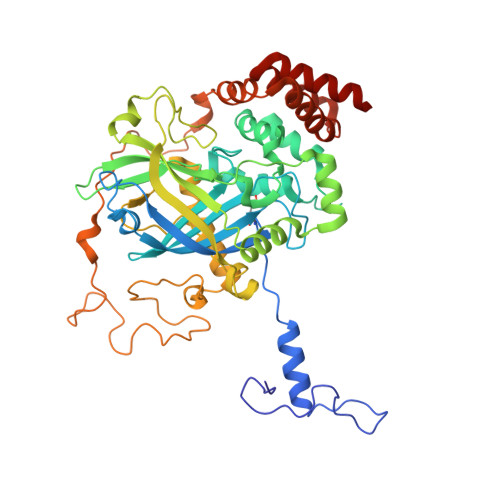Structural studies of Proteus mirabilis catalase in its ground state, oxidized state and in complex with formic acid.
Andreoletti, P., Pernoud, A., Sainz, G., Gouet, P., Jouve, H.M.(2003) Acta Crystallogr D Biol Crystallogr 59: 2163-2168
- PubMed: 14646074
- DOI: https://doi.org/10.1107/s0907444903019620
- Primary Citation of Related Structures:
1MQF, 1NM0 - PubMed Abstract:
The structure of Proteus mirabilis catalase in complex with an inhibitor, formic acid, has been solved at 2.3 A resolution. Formic acid is a key ligand of catalase because of its ability to react with the ferric enzyme, giving a high-spin iron complex. Alternatively, it can react with two transient oxidized intermediates of the enzymatic mechanism, compounds I and II. In this work, the structures of native P. mirabilis catalase (PMC) and compound I have also been determined at high resolution (2.0 and 2.5 A, respectively) from frozen crystals. Comparisons between these three PMC structures show that a water molecule present at a distance of 3.5 A from the haem iron in the resting state is absent in the formic acid complex, but reappears in compound I. In addition, movements of solvent molecules are observed during formation of compound I in a cavity located away from the active site, in which a glycerol molecule is replaced by a sulfate. These results give structural insights into the movement of solvent molecules, which may be important in the enzymatic reaction.
- Avidis S.A., Biopôle Clermont-Limagne, 63360 Saint-Beauzire, France.
Organizational Affiliation:





















